
Hoi An Ancient Town: A Timeless Vietnamese Gem
Discover Hoi An Ancient Town in Vietnam: A UNESCO World Heritage Site with timeless charm, vibrant markets, and lantern-lit streets that tell tales of a rich cultural past.
Hoi An Ancient Town, located in central Vietnam, is a charming destination that transports visitors back in time. This UNESCO World Heritage Site is known for its well-preserved architecture, lantern-lit streets, and rich cultural heritage. As you wander through the narrow alleys, you'll encounter a blend of Vietnamese, Chinese, and Japanese influences, reflecting the town's historical significance as a major trading port from the 15th to the 19th century. The town's vibrant markets and riverside setting add to its picturesque charm. The Thu Bon River flows gently through Hoi An, offering opportunities for boat rides and sunset views that are nothing short of magical. The local cuisine is a treat for the senses, with dishes like Cao Lau and White Rose Dumplings being must-tries. Hoi An is also famous for its tailor shops, where you can have custom-made clothing crafted to your specifications within a day or two. The town comes alive at night with colorful lanterns illuminating the streets, creating a fairy-tale ambiance that captivates every visitor. Whether you're exploring ancient temples, enjoying a traditional performance, or simply soaking in the beauty of the town, Hoi An offers an unforgettable experience.
Local tips in Hoi An Ancient Town
- Visit during the Full Moon Festival to see the town illuminated with beautiful lanterns and experience traditional performances.
- Rent a bicycle to explore the town and its surroundings at your own pace; it's an eco-friendly and enjoyable way to get around.
- Try to visit the markets early in the morning to experience the local life and avoid the crowds.
- Don't miss a boat ride along the Thu Bon River at sunset for breathtaking views and photo opportunities.
- Make sure to get custom-made clothing at one of the many tailor shops; it's a unique and affordable way to take a piece of Hoi An home with you.
- Explore the nearby countryside and beaches for a change of scenery and a more relaxed atmosphere.
Hoi An Ancient Town: A Timeless Vietnamese Gem
Hoi An Ancient Town, located in central Vietnam, is a charming destination that transports visitors back in time. This UNESCO World Heritage Site is known for its well-preserved architecture, lantern-lit streets, and rich cultural heritage. As you wander through the narrow alleys, you'll encounter a blend of Vietnamese, Chinese, and Japanese influences, reflecting the town's historical significance as a major trading port from the 15th to the 19th century. The town's vibrant markets and riverside setting add to its picturesque charm. The Thu Bon River flows gently through Hoi An, offering opportunities for boat rides and sunset views that are nothing short of magical. The local cuisine is a treat for the senses, with dishes like Cao Lau and White Rose Dumplings being must-tries. Hoi An is also famous for its tailor shops, where you can have custom-made clothing crafted to your specifications within a day or two. The town comes alive at night with colorful lanterns illuminating the streets, creating a fairy-tale ambiance that captivates every visitor. Whether you're exploring ancient temples, enjoying a traditional performance, or simply soaking in the beauty of the town, Hoi An offers an unforgettable experience.
When is the best time to go to Hoi An Ancient Town?
Iconic landmarks you can’t miss
Hoi An Market
Explore the bustling Hoi An Market, a vibrant hub for local crafts, delicious street food, and an authentic Vietnamese cultural experience.

Old House of Tan Ky
Explore the Old House of Tan Ky, a captivating heritage building in Hoi An, Vietnam, showcasing a blend of Vietnamese, Chinese, and Japanese architectural styles.
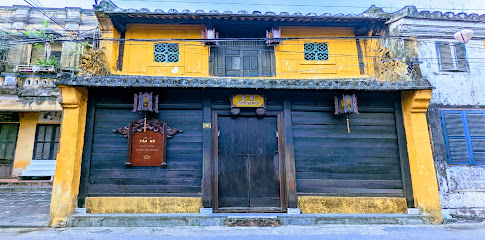
Museum of Folk Culture
Discover the rich traditions and vibrant culture of Vietnam at the Museum of Folk Culture in Hoi An. A must-see for every traveler!
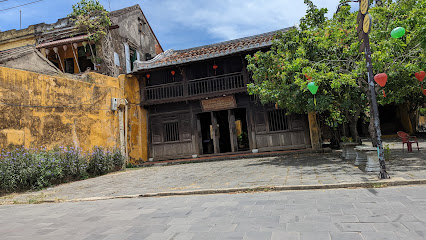
Phố Đi Bộ Hội An
Experience the authentic flavors of Vietnam at Phở Địa Bồ in Hội An, where every bowl of phở tells a delicious story.
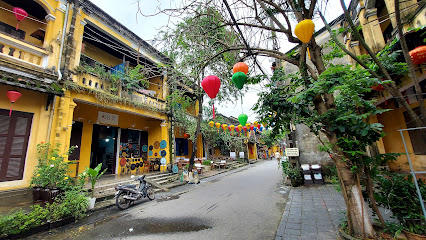
The Old House of Phung Hung
Explore The Old House of Phung Hung, a historic gem in Hoi An showcasing the rich cultural exchange of Vietnam through its unique architecture and heritage.
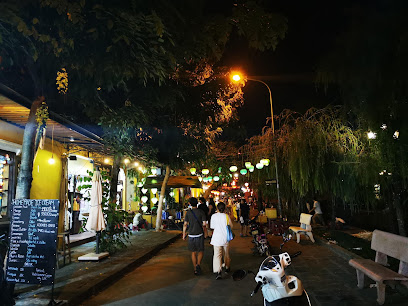
Ancient House
Explore the Ancient House in Hoi An, a stunning tourist attraction revealing Vietnam's cultural heritage through exquisite architecture and history.

Hoi An ancient town
Explore Hoi An Ancient Town, a UNESCO World Heritage site rich in culture, history, and stunning architecture, perfect for an unforgettable travel experience in Vietnam.
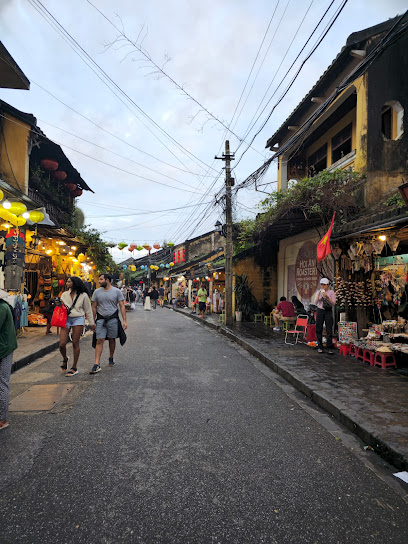
Quan Thang Ancient House
Explore the rich history and stunning architecture of Quan Thang Ancient House in Hoi An, a must-see gem that captures the essence of Vietnamese culture.
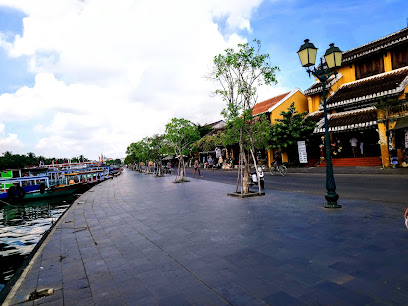
Phố cổ Hội An
Explore Hôi An Ancient Town, an enchanting blend of history, culture, and cuisine, where every street tells a story and every meal delights the senses.
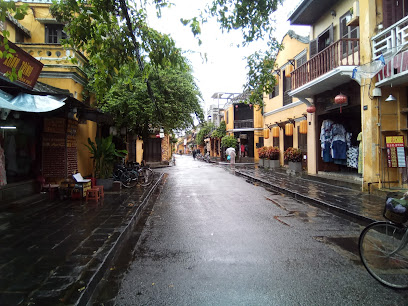
Quan Cong Temple
Discover the serene beauty and cultural depth of Quan Cong Temple in Hoi An, a must-visit for travelers seeking spiritual enrichment and historical insight.
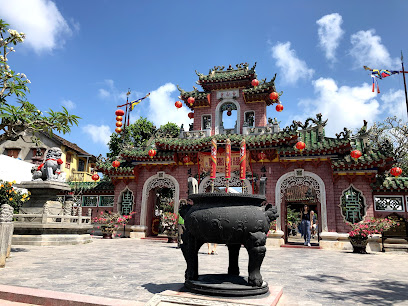
Hoi An sculpture promenade
Experience the enchanting blend of art and nature at Hoi An Sculpture Promenade, where Vietnamese culture meets stunning outdoor sculptures.

Bài Chòi Hội An
Discover the vibrant cultural heritage of Vietnam at Bài Chòi Hội An, where traditional art and community come together in harmony.
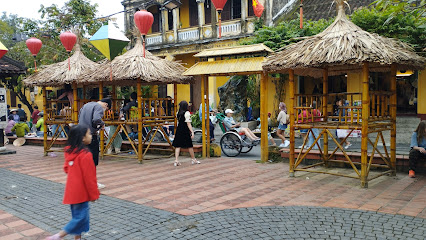
Thu Bồn River
Explore the beauty of Thu Bồn River in Hoi An, Vietnam—where serene landscapes meet rich cultural heritage and unforgettable experiences await.
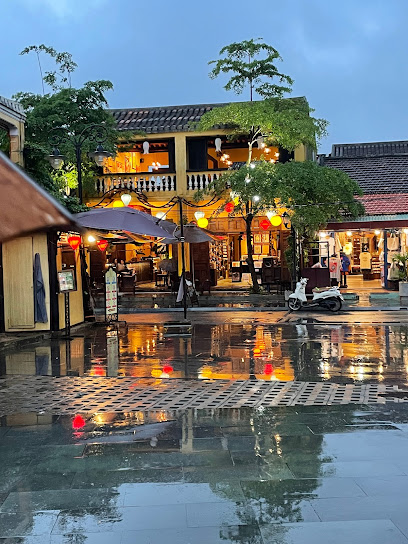
Hidden Hammock Spot
Unwind in the serene beauty of Hidden Hammock Spot, a tranquil oasis in Hội An, Vietnam, perfect for relaxation and picturesque views.
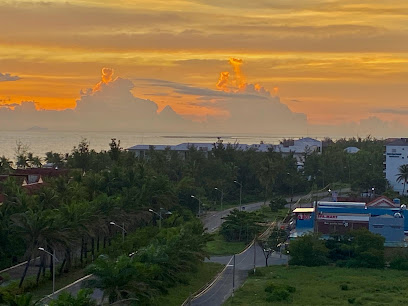
Cao Dai Temple of Hoi An
Discover spiritual harmony and architectural beauty at the Cao Dai Temple in Hoi An, a vibrant symbol of Vietnam's diverse religious traditions.
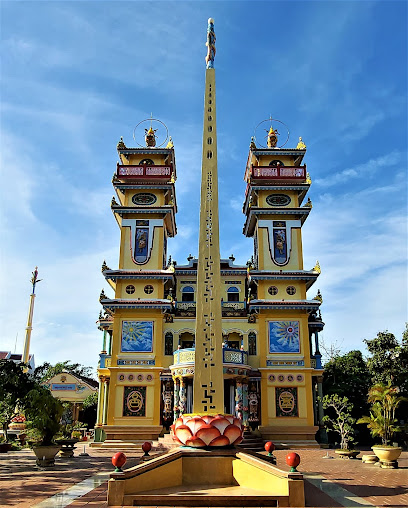
Unmissable attractions to see
Precious Heritage Art Gallery Museum
Explore the Precious Heritage Art Gallery Museum in Hoi An, where stunning photography and rich cultural exhibits showcase Vietnam's diverse ethnic heritage.
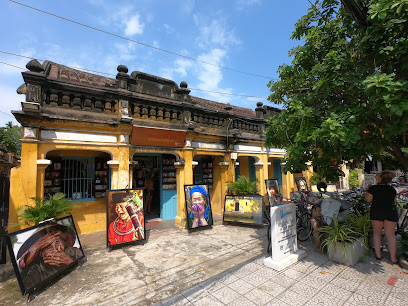
Vy's Market Restaurant
Discover the vibrant flavors of Vietnam at Vy's Market Restaurant, where authentic cuisine meets hands-on cooking classes in Hoi An.
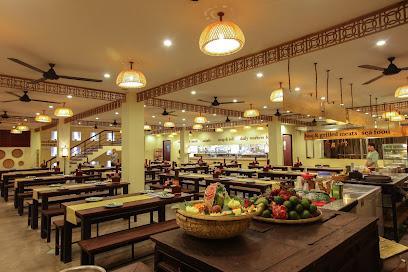
Phổ cổ Hội An
Experience the rich cultural heritage and breathtaking beauty of Hoi An Ancient Town, a UNESCO World Heritage site filled with historic charm and culinary delights.
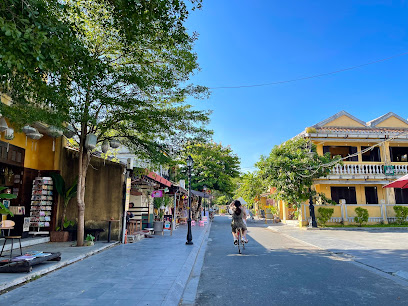
Rehahn Gallery
Explore the enchanting Rehahn Gallery in Hoi An, where art and culture come alive through stunning photography and vibrant displays.
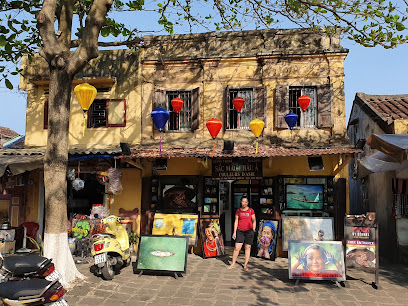
Museum of Folk Culture
Explore Vietnam's vibrant heritage at the Museum of Folk Culture in Hoi An, showcasing traditional crafts, folklore, and local customs.
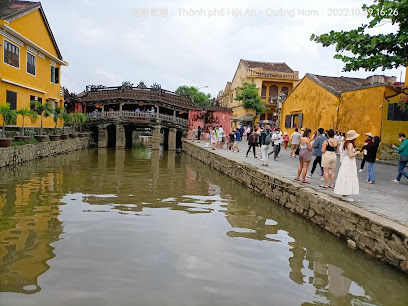
Dng.coffee
Experience the essence of Da Nang at Dng.coffee, a cozy coffee shop offering quality brews, delicious snacks, and a charming ambiance.
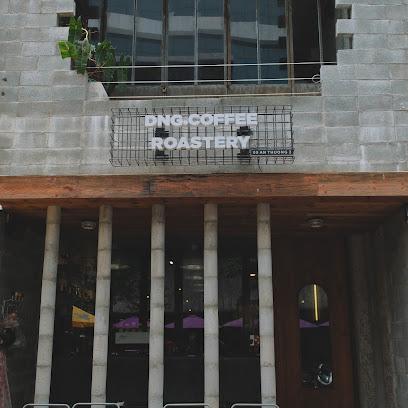
Phố Đi Bộ Hội An
Experience authentic Vietnamese flavors at Phở Đì Bô Hôi An, where traditional cooking meets a vibrant atmosphere in the heart of Hôi An.
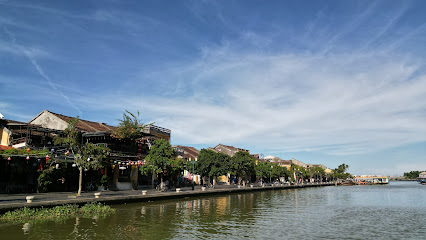
Chùa Pháp Bảo
Experience the serene beauty of Chùa Pháp Bảo, a captivating Buddhist temple in Hoi An, Vietnam, rich in culture and tranquility.
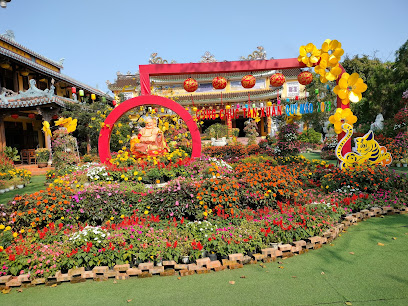
Ancient House
Explore Hoi An's Ancient House, a beautifully preserved landmark reflecting the rich cultural tapestry of Vietnam's history and architecture.
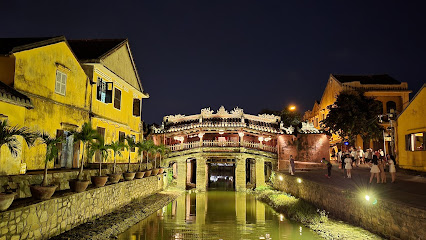
Hoi An ancient town
Immerse yourself in the enchanting history and vibrant culture of Hoi An Ancient Town, where every corner reveals a story.
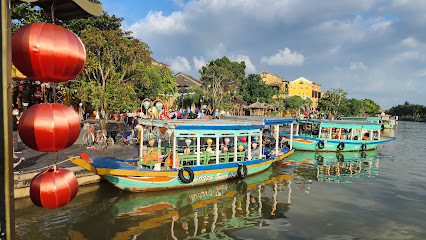
Buu Dai Son Pagoda
Discover the spiritual charm of Buu Dai Son Pagoda in Da Nang, Vietnam, where tranquility meets breathtaking beauty and rich cultural heritage.
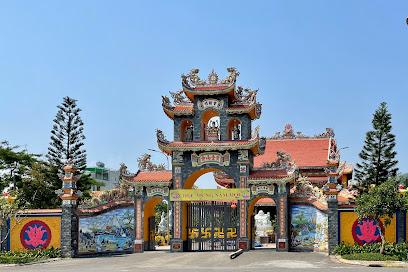
Lantern Making Class
Experience the art of Vietnamese lantern making in Hoi An, where tradition and creativity illuminate your journey.
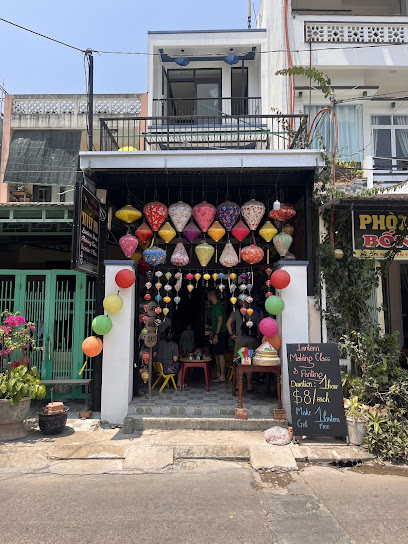
Phố cổ Hội An
Explore the enchanting streets of Phố cổ Hội An, a UNESCO World Heritage Site filled with history, culture, and culinary delights.
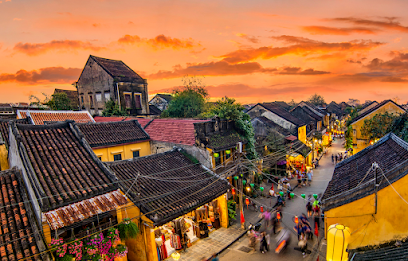
Cua Dai Beach
Discover the tranquil charm of Cua Dai Beach, where soft sands and azure waters create the perfect getaway in Hoi An, Vietnam.
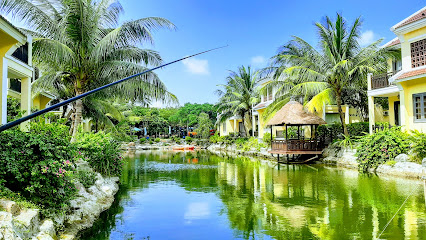
Hoi An Village Experience
Experience the authentic charm of rural Vietnam at the Hoi An Village Experience, where tradition and culture come alive in a stunning natural setting.
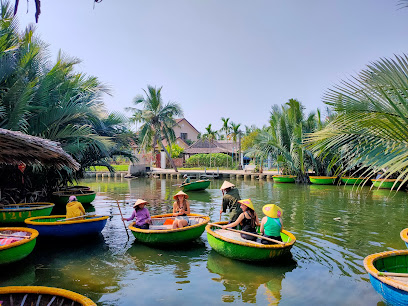
Essential places to dine
Morning Glory Original
Discover authentic Vietnamese flavors at Morning Glory Original in Hoi An – where tradition meets culinary excellence.
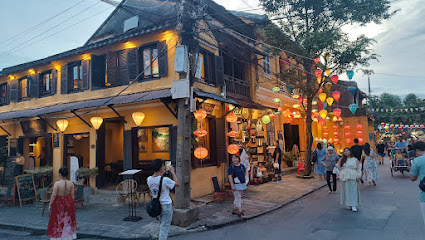
Restaurant & Cafe Tuấn Rich Flavor of Hoi An Vietnamese Familly Restaurant
Experience authentic Vietnamese flavors at Tuấn Rich Flavor in Hoi An, where tradition meets taste in every dish.

Nhan's kitchen
Experience authentic Vietnamese flavors at Nhan's Kitchen in Hoi An – where every dish tells a story.
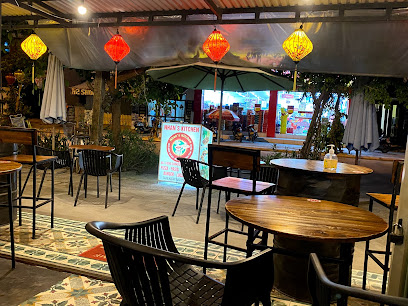
Pho Xua
Discover authentic Vietnamese flavors at Pho Xua in Hội An - where every bowl tells a story of tradition and taste.
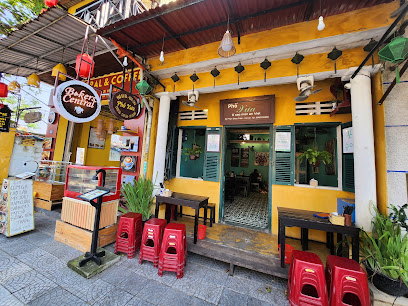
MIX Greek Restaurant Hoi An
Experience authentic Greek cuisine at MIX Greek Restaurant in Hoi An – where Mediterranean flavors meet Vietnamese hospitality.
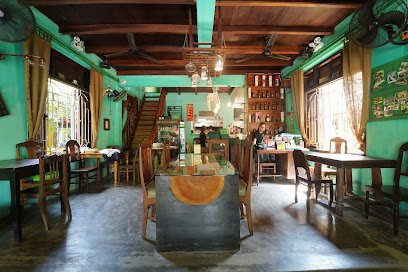
Nhà hàng Cơm Linh
Discover authentic Vietnamese flavors at Nhà Hàng Cơm Linh, where delightful dishes meet warm hospitality in Hội An.
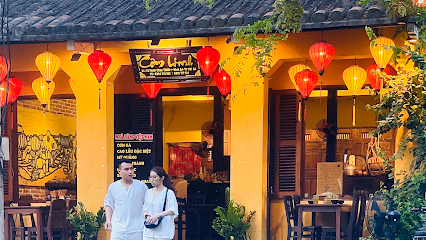
Firefly Hoi An | Restaurant & Bar
Discover authentic Vietnamese flavors at Firefly Hoi An Restaurant & Bar - where every dish tells a story.
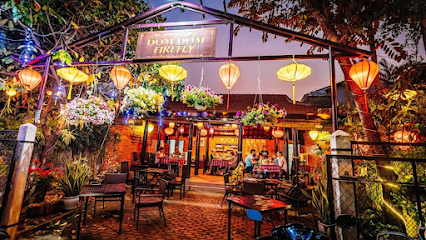
Tin Tin Restaurant-Bar
Discover exquisite Vietnamese flavors at Tin Tin Restaurant-Bar in Hội An - where every dish tells a story.
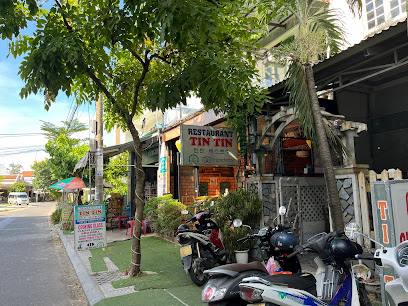
Orivy Hoi An Local Food Restaurant
Discover the rich flavors of Vietnam at Orivy Hoi An Local Food Restaurant—an unforgettable culinary experience in the heart of Hoi An.
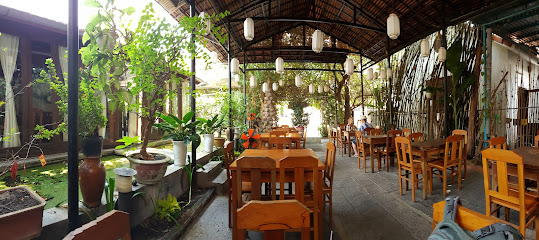
Red Gecko Restaurant
Experience authentic Vietnamese cuisine at Red Gecko Restaurant in Hội An – where every dish tells a story!
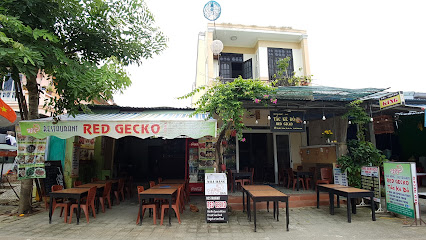
Hong Phuc 2
Discover authentic Vietnamese cuisine at Hong Phuc 2 in Hội An - a culinary gem offering unforgettable flavors in a charming setting.
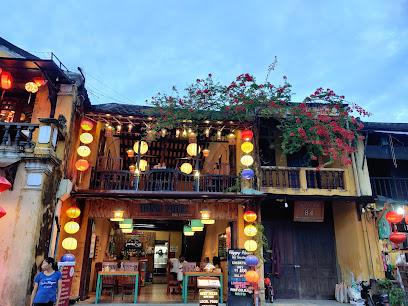
Madam Kieu Vietnamese Restaurant
Discover authentic Vietnamese cuisine at Madam Kieu Restaurant in Hội An – a delightful fusion of flavors and culture awaits every visitor.
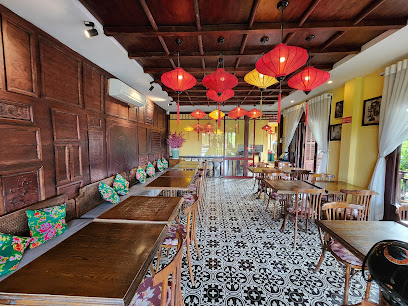
Circle Restaurant | Hoi An Burgers and Tacos by Circle Cafe
Experience the best burgers and tacos in Hoi An at Circle Restaurant - where Vietnamese flavors meet international favorites.
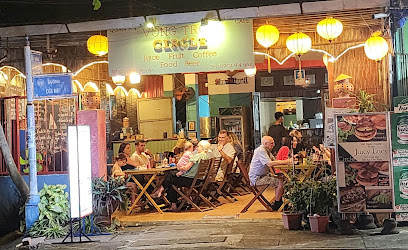
SECRET GARDEN HOIAN
Experience authentic Vietnamese cuisine in a serene garden setting at Secret Garden Hoi An, where every meal is a celebration of local flavors.
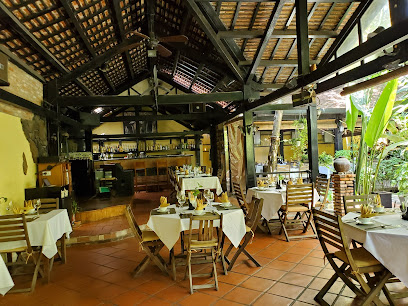
Hai Cafe Courtyard BBQ & Restaurant in Hoi An Old Town
Experience authentic Vietnamese cuisine at Hai Cafe Courtyard BBQ & Restaurant in the heart of Hoi An Old Town, where flavors meet tradition.
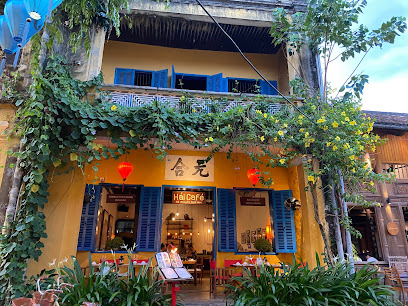
Markets, malls and hidden boutiques
Sunday in Hoi An
Explore Sunday in Hoi An, a charming gift shop in the heart of Old Town, offering unique souvenirs and handmade treasures from Vietnam.

Future clothes shop
Explore diverse styles at Future Clothes Shop in Hội An, Vietnam, where tradition meets modern fashion in a vibrant shopping atmosphere.
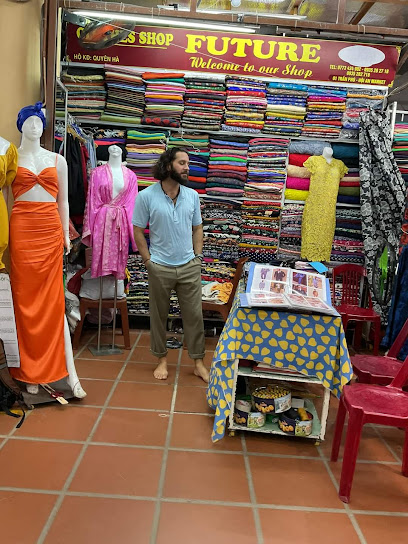
NonyLeather (Hoi An)
Discover exquisite leather craftsmanship and fashionable accessories at NonyLeather, a must-visit shop in the heart of Hoi An.
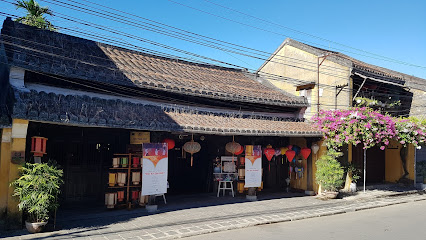
Lotus Leaf Fine Arts & Jewellery
Explore the exquisite craftsmanship at Lotus Leaf Fine Arts & Jewellery, a premier destination for unique jewelry and local art in Hội An.
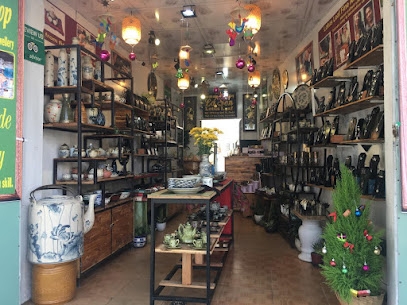
Hart Hoi An - Upcycled Home Decor
Explore the beauty of sustainable artistry at Hart Hoi An, where every piece tells a story of creativity and culture.
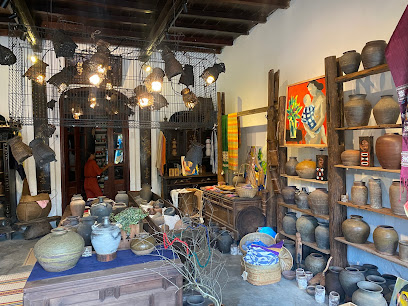
Reaching Out Arts & Crafts
Discover unique handmade crafts and support local artisans at Reaching Out Arts & Crafts in Hội An, Vietnam.
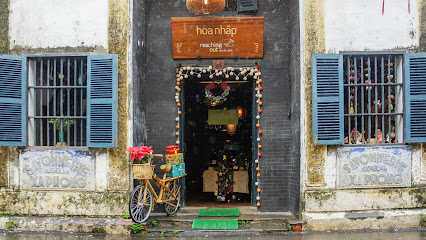
Copenhagen Delights Hoi An
Discover unique fashion at Copenhagen Delights Hoi An, where modern styles meet traditional Vietnamese craftsmanship in a captivating shopping experience.

Nam Trân Art Craft Village
Explore Nam Trân Art Craft Village in Hội An, Vietnam, where traditional craftsmanship meets vibrant culture in a charming antique store atmosphere.
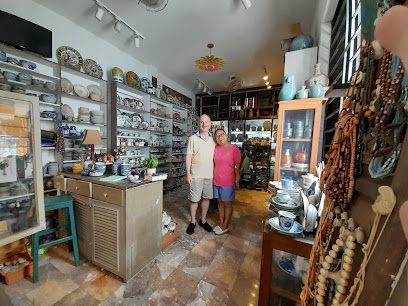
Quầy Lưu Niệm Lê Phan
Discover the essence of Vietnam at Quầy Lưu Niệm Lê Phan, where exquisite leather goods and unique gifts await in the charming town of Hội An.

OCOP House - Đặc sản & Quà tặng Hội An - Best Hoi An Souvenir & Handicraft Workshop
Discover the essence of Hoi An with unique handicrafts and organic products at OCOP House, your go-to gift shop and cultural experience.
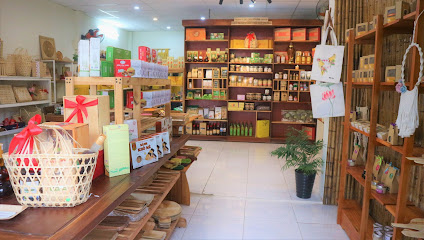
AVANA VietNam Designer Boutique
Experience the blend of traditional Vietnamese craftsmanship and modern design at AVANA VietNam Designer Boutique in Hội An.
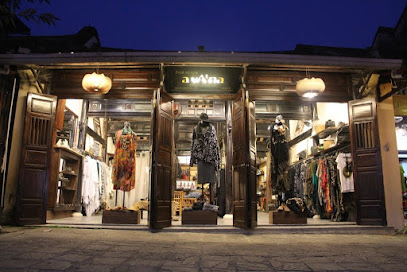
BLOOM HOI AN STORE
Explore Bloom Hoi An Store for unique, handcrafted souvenirs that capture the essence of Vietnam's culture and artistry.
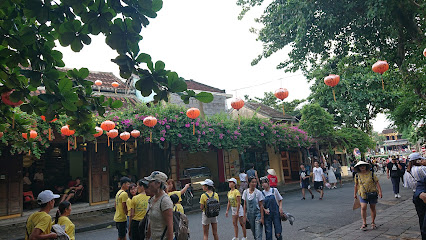
Souvenir Hoi An Shop
Explore the vibrant Souvenir Hoi An Shop for unique handmade crafts, local treasures, and cultural gifts that celebrate Vietnam's rich heritage.
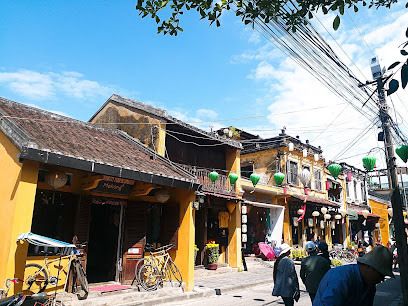
Đặc Sản Hội An Quảng Nam - Nhân Hồng Đức
Explore authentic Vietnamese gifts and local culinary delights at Đặc Sản Hội An Quảng Nam - Nhân Hồng Đức in the heart of Hội An.
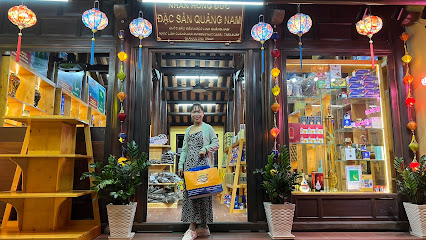
hiAn
Explore Hội An's vibrant gift shop for unique handcrafted treasures, clothing, and authentic Vietnamese souvenirs that reflect the rich cultural heritage.
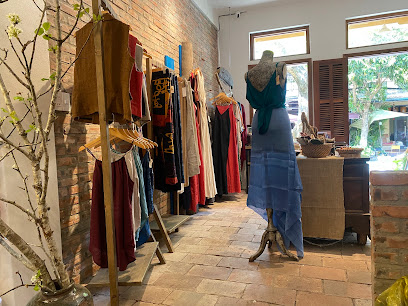
Essential bars & hidden hideouts
Hair of the dog bar Hoi An
Discover vibrant nightlife at Hair of the Dog Bar in Hoi An, where great drinks, live music, and unforgettable moments await you.

Soul Kitchen
Experience the vibrant flavors and rhythms of Hội An at Soul Kitchen, a top bar and restaurant offering delicious food and live music entertainment.
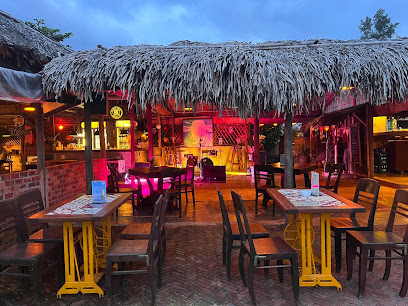
The Shamrock Irish Pub Hoi An
Discover the vibrant atmosphere and delightful flavors of The Shamrock Irish Pub in Hoi An, where Irish culture meets Vietnamese hospitality.
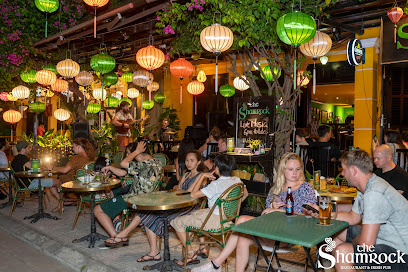
Why Not Club Bar Hoi An
Experience the vibrant nightlife of Hoi An at Why Not Club Bar, where expertly crafted cocktails meet an energetic atmosphere for an unforgettable night out.
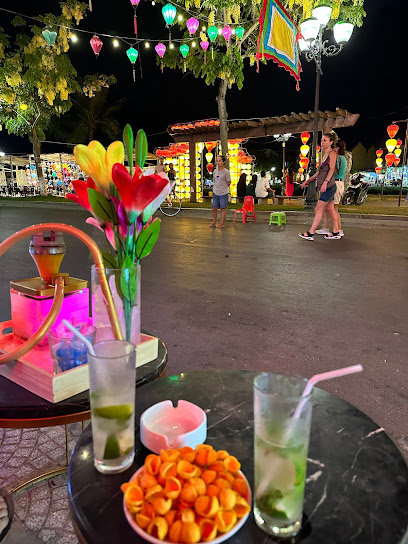
Market Bar - Market Terrace
Discover the lively Market Bar - Market Terrace in Hội An, where innovative cocktails and a charming atmosphere await every visitor.
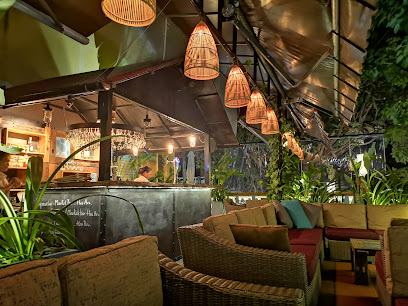
Tiger Tiger Bar
Experience the lively spirit of Hội An at Tiger Tiger Bar, where refreshing drinks and vibrant atmosphere create unforgettable nights.
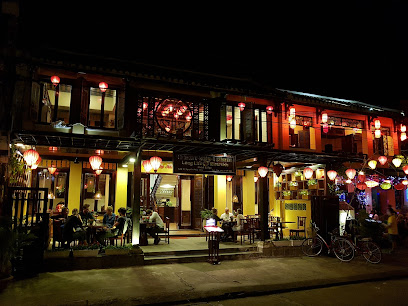
Hair Of The Dog Bar Hoian
Discover the lively nightlife at Hair Of The Dog Bar in Hoi An, where cocktails flow, friendships blossom, and the party never stops.
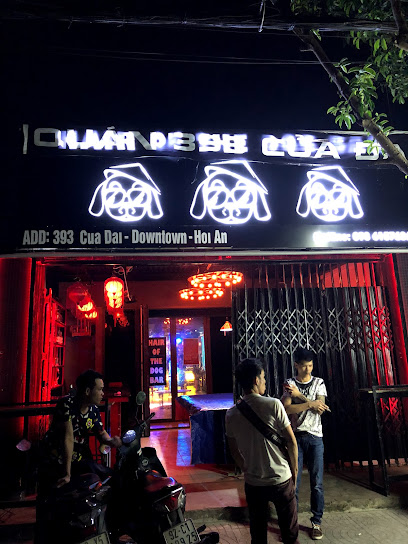
Bungalow Beach Bar
Experience the vibrant atmosphere and delicious cuisine at Bungalow Beach Bar, your tropical retreat in Hội An, Vietnam.
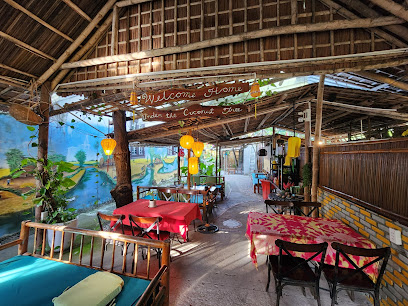
Why Not Bar
Discover the vibrant nightlife and refreshing cocktails at Why Not Bar, Hội An's premier destination for entertainment and socializing.
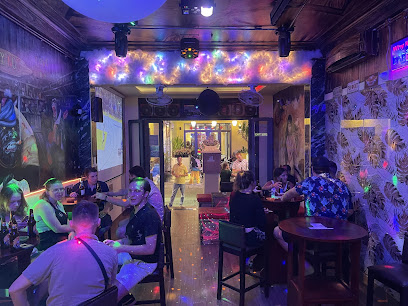
Woop Woop Bar
Experience the vibrant nightlife at Woop Woop Bar in Hội An, where creative cocktails and friendly vibes await every traveler.
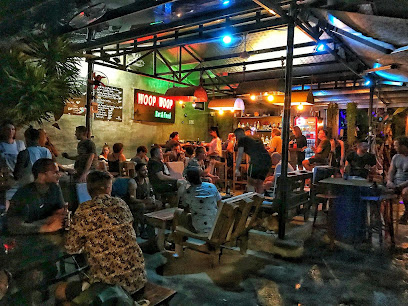
Sky bar Hoi An (rastabar)
Discover the vibrant nightlife at Sky Bar Hoi An, where cocktails and darts meet stunning views in a lively atmosphere.
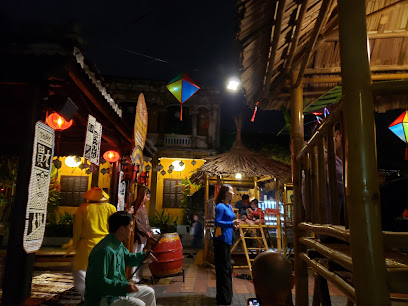
Bob Marley Bar Hoian
Discover the best of Hội An at Bob Marley Bar Hoian, where delicious grilled food meets live music in a vibrant atmosphere.
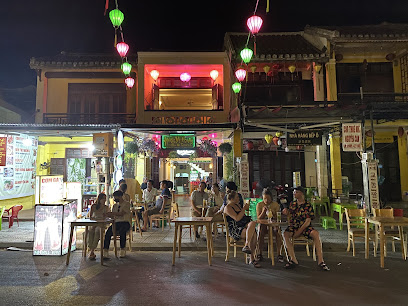
Wanderlust Hoi An
Discover the lively spirit of Hội An at Wanderlust Hoi An, where vibrant cocktails and a welcoming atmosphere come together for a memorable night out.
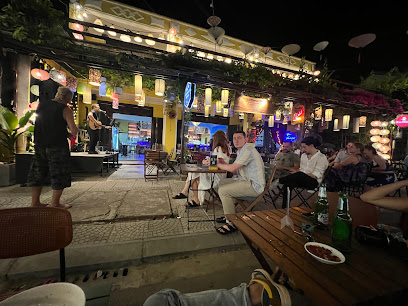
Hoi An T/T Cocktail Bar, Coffee & Antiques
Discover the unique charm of Hoi An T/T Cocktail Bar, where exquisite cocktails, rich coffee, and vintage antiques come together in a captivating experience.
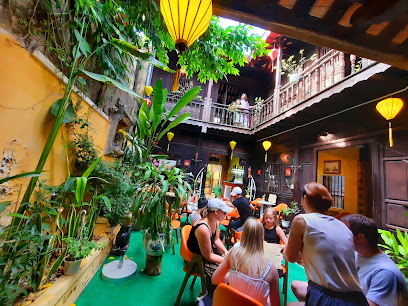
Guitar Hawaii Coffee Bar Restaurant Hoi An
Experience the vibrant flavors of Hoi An at Guitar Hawaii Coffee Bar Restaurant, where coffee meets traditional country cuisine in a quirky atmosphere.
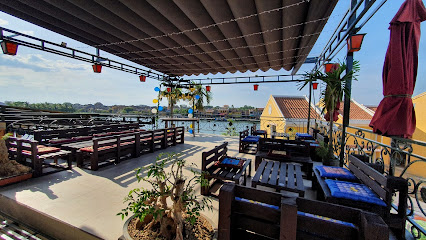
Local Phrases about Hoi An Ancient Town
-
- HelloXin chào
[sin chow] - GoodbyeTạm biệt
[tam byet] - YesVâng
[vang] - NoKhông
[kohng] - Please/You're welcomeXin vui lòng
[sin vui long] - Thank youCảm ơn
[kam uhn] - Excuse me/SorryXin lỗi
[sin loy] - How are you?Bạn khỏe không?
[bahn kweh kohng] - Fine. And you?Khỏe. Còn bạn?
[kweh. kuhn bahn] - Do you speak English?Anh/Chị có nói tiếng Anh không?
[anh/chi koh noy tyeng ang kohng] - I don't understandTôi không hiểu
[toy kohng hyehu]
- HelloXin chào
-
- I'd like to see the menu, pleaseTôi muốn xem menu, vui lòng
[toy muhn sem menu, vui long] - I don't eat meatTôi không ăn thịt
[toy kohng un tit] - Cheers!Chúc sức khỏe!
[chuk sook kweh] - I would like to pay, pleaseTôi muốn thanh toán, vui lòng
[toy muhn thanh toan, vui long]
- I'd like to see the menu, pleaseTôi muốn xem menu, vui lòng
-
- Help!Giúp!
[yoop] - Go away!Đi đi!
[dee dee] - Call the Police!Gọi cảnh sát!
[goy kahn saht] - Call a doctor!Gọi bác sĩ!
[goy bahk see] - I'm lostTôi lạc đường
[toy lahch doong] - I'm illTôi ốm
[toy ohm]
- Help!Giúp!
-
- I'd like to buy...Tôi muốn mua...
[toy muhn mwa] - I'm just lookingTôi chỉ xem thôi
[toy chi sem toy] - How much is it?Giá bao nhiêu?
[jah bao nyew] - That's too expensiveĐắt quá
[daht kwa] - Can you lower the price?Bạn có thể giảm giá không?
[bahn koh thee yem jah kohng]
- I'd like to buy...Tôi muốn mua...
-
- What time is it?Bây giờ là mấy giờ?
[bye yuh lah mye yuh] - It's one o'clockMột giờ
[moot yuh] - Half past (10)Mười giờ rưỡi
[mooy yuh rooy] - MorningBuổi sáng
[boo-ee sang] - AfternoonBuổi chiều
[boo-ee chee-oo] - EveningBuổi tối
[boo-ee toy] - YesterdayNgày hôm qua
[nye hom kwah] - TodayHôm nay
[hom nye] - TomorrowNgày mai
[nye mye] - 1Một
[moot] - 2Hai
[high] - 3Ba
[bah] - 4Bốn
[bohn] - 5Năm
[nahm] - 6Sáu
[sow] - 7Bảy
[by] - 8Tám
[tahm] - 9Chín
[cheen] - 10Mười
[mooy]
- What time is it?Bây giờ là mấy giờ?
-
- Where's a/the...?Chỗ...ở đâu?
[cho...uh doh] - What's the address?Địa chỉ là gì?
[dih chih lah zee] - Can you show me (on the map)?Bạn có thể chỉ cho tôi (trên bản đồ) không?
[bahn koh thee chee cho toy (trern bahn doh) kohng] - When's the next (bus)?Khi nào là chuyến xe buýt tiếp theo?
[khee now lah chuyen seh bwit tyep theo] - A ticket (to ....)Một vé (đến ....)
[moot veh (den ....)]
- Where's a/the...?Chỗ...ở đâu?
History of Hoi An Ancient Town
-
Hoi An Ancient Town, situated on the Thu Bon River, was established as a bustling trading port in the 15th century. Its strategic location made it accessible to merchants from China, Japan, India, and Europe, fostering a diverse and vibrant trading community. The town's architectural and cultural landscape began to take shape during this period, influenced by various international styles and traditions.
-
Between the 16th and 18th centuries, Hoi An reached its zenith as a major trading hub. Chinese and Japanese merchants established settlements in the town, bringing with them their unique architectural styles, which are evident in the town's historic buildings. European traders, including the Portuguese, Dutch, French, and English, also frequented Hoi An, adding to its multicultural character. The town's prosperity during this period is reflected in the grand merchant houses, temples, and assembly halls that still stand today.
-
The 19th century marked the beginning of Hoi An's decline as a trading port. The silting of the Thu Bon River made it difficult for large ships to navigate, leading to a decrease in trade. The rise of nearby Da Nang as the new center of maritime trade further contributed to Hoi An's decline. Despite this downturn, the town's architecture and cultural heritage remained largely intact, preserving its historical charm.
-
Recognized for its historical and cultural significance, Hoi An Ancient Town was designated a UNESCO World Heritage Site in 1999. The town's well-preserved architecture, including timber-frame buildings, narrow streets, and traditional houses, offers a glimpse into its rich past. Efforts to preserve and restore these historical structures have been ongoing, ensuring that Hoi An continues to be a living museum of its storied history.
-
Hoi An's architectural landscape is a testament to the influence of Japanese and Chinese traders who settled in the town. The iconic Japanese Covered Bridge, built in the early 17th century, is one of Hoi An's most recognizable landmarks. Chinese Assembly Halls, such as the Fujian Assembly Hall and the Cantonese Assembly Hall, showcase intricate designs and serve as cultural hubs for the Chinese community in Hoi An. These structures highlight the town's multicultural heritage and its role as a melting pot of different cultures.
-
The surrounding areas of Hoi An are home to several traditional craft villages that have been integral to the town's economy and culture. Villages such as Thanh Ha (pottery), Kim Bong (carpentry), and Tra Que (vegetable farming) have maintained their artisanal traditions for centuries. These villages offer visitors a chance to witness traditional craftsmanship and understand the local way of life that has sustained Hoi An's community through the ages.
-
Hoi An played a significant role in Vietnamese maritime history, serving as a crucial port for the Champa Kingdom before becoming a major trading center. The town's strategic location along the maritime Silk Road facilitated the exchange of goods, ideas, and culture between East and West. Maritime activities have shaped the town's development and left an indelible mark on its history and identity.
Hoi An Ancient Town Essentials
-
Hoi An Ancient Town is located in Quang Nam Province, central Vietnam. The nearest international airport is Da Nang International Airport, approximately 30 kilometers away. From Da Nang, you can take a taxi, private transfer, or a local bus to Hoi An. The journey typically takes around 45 minutes by road. Alternatively, you can take a train to Da Nang from major Vietnamese cities such as Hanoi or Ho Chi Minh City and then proceed to Hoi An by taxi or bus.
-
Hoi An is best explored on foot or by bicycle due to its compact size and pedestrian-friendly streets. Bicycles can be rented from numerous shops and hotels around town. For longer distances, you can use taxis or motorbike taxis (xe om). There are also local buses that connect Hoi An with surrounding areas, including Da Nang. If you wish to explore further afield, consider renting a motorbike or hiring a private car with a driver for the day.
-
The official currency in Vietnam is the Vietnamese Dong (VND). Credit cards are accepted in many hotels, restaurants, and shops, but it is advisable to carry cash, especially in smaller establishments and local markets. ATMs are widely available in Hoi An, but ensure you withdraw sufficient cash for your needs, as some ATMs might run out of money during peak tourist seasons.
-
Hoi An is generally a safe destination for tourists. However, standard precautions should be taken. Avoid walking alone at night in secluded areas and be cautious of pickpockets in crowded places such as markets and tourist spots. While there are no specific high-crime areas targeting tourists, it's always best to stay vigilant and aware of your surroundings.
-
In case of emergency, dial 113 for police, 114 for fire, and 115 for medical emergencies. The local hospital in Hoi An can handle most medical issues, but for more serious conditions, you may need to go to a larger hospital in Da Nang. It is highly recommended to have travel insurance that covers medical emergencies. There are also several pharmacies in town for minor health issues and over-the-counter medications.
-
Fashion: Do dress modestly, especially when visiting religious sites. Avoid wearing revealing clothing. Religion: Do respect local customs and traditions. Always remove your shoes when entering temples and pagodas. Public Transport: Do be respectful and polite. Don't eat or drink on public transport. Greetings: Do greet people with a slight bow or nod; a handshake is also acceptable. Eating & Drinking: Do try local delicacies and accept food offerings graciously. Don't refuse hospitality, as it is considered impolite.
-
To experience Hoi An like a local, visit the local markets early in the morning when they are bustling with activity. Engage with the locals, who are often very friendly and willing to share stories about their town. Don't miss out on a boat ride on the Thu Bon River at sunset for a unique perspective of the town. For a special treat, take a cooking class to learn how to prepare traditional Vietnamese dishes.
Trending Landmarks in Hoi An Ancient Town
Nearby Cities to Hoi An Ancient Town
-
Things To Do in Da Nang
-
Things To Do in Tam Ky
-
Things To Do in Hue
-
Things To Do in Quy Nhon
-
Things To Do in Pakse
-
Things To Do in Champasak
-
Things To Do in Buon Ma Thuot
-
Things To Do in Ubon Ratchathani
-
Things To Do in Savannakhet
-
Things To Do in Thakhek
-
Things To Do in Nha Trang
-
Things To Do in Dalat
-
Things To Do in Kratie
-
Things To Do in Mui Ne
-
Things To Do in Phan Thiet













